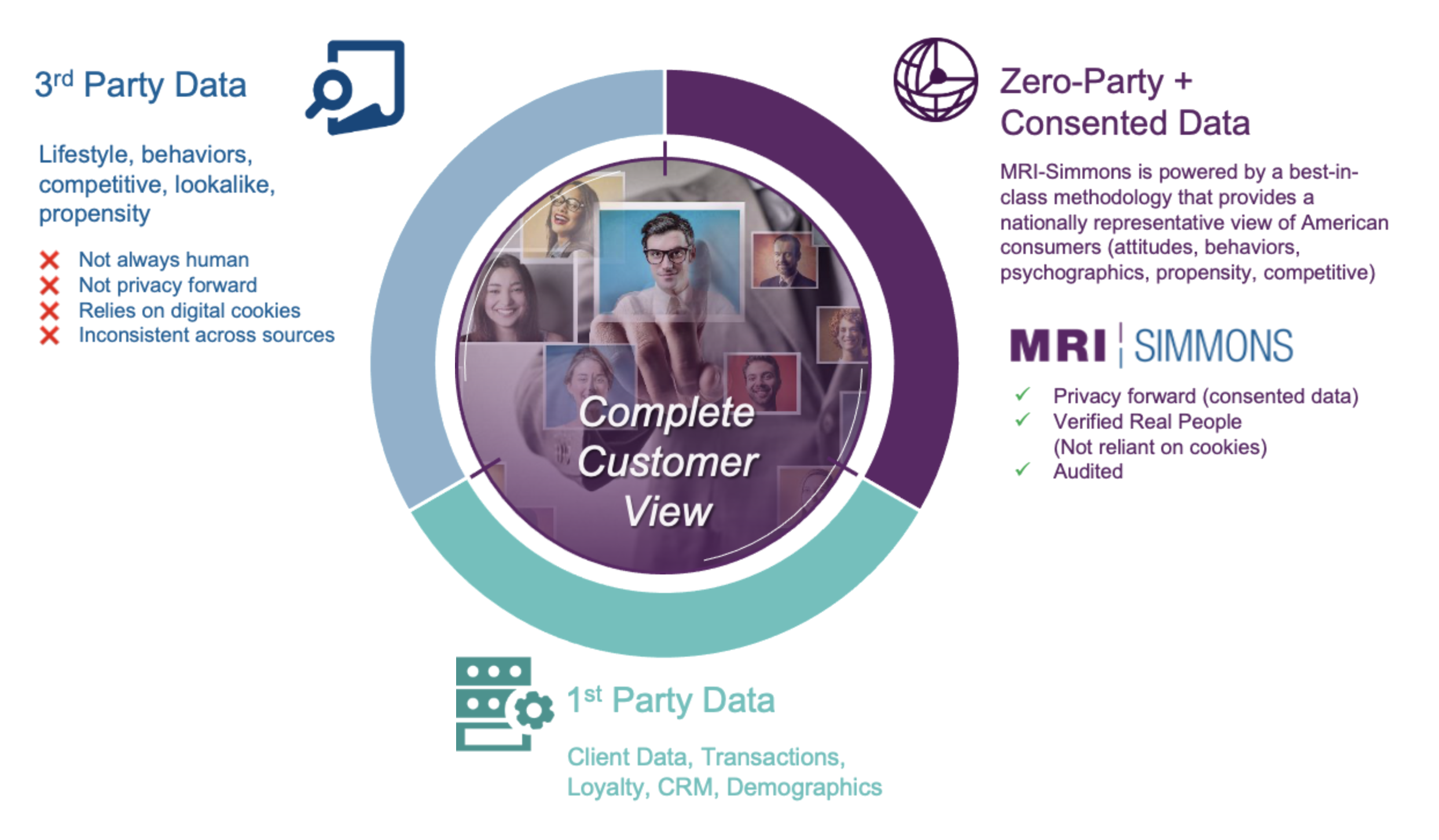What Brands Need to Know About Zero-Party Data
A New Reality for Data
If you work in marketing or advertising, it has been virtually impossible to avoid webinars, white papers, and conference presentations about how to prepare for the “cookie crumbling.” All of that content refers to Google’s announcement that, in 2021, now pushed to 2023, their Chrome browser would no longer allow third-party cookies. What this translates to is that companies will no longer be able to use cookies to track consumers across websites, and as a result, marketers will no longer be able to use these cookies for targeted campaigns, insights, or performance measurement. Since Google’s Chrome is the dominant browser, with over 50% market share of all browser usage, this leaves many businesses searching for a “cookie-less” way forward.
To add to the marketer’s challenge, in April 2021 Apple introduced its App Tracking Transparency (ATT) framework as part of the iOS 14.5 release. The result of this new framework is that Apple now requires apps to obtain consent from a user before it can collect data for the purpose of tracking them across other apps and web sites. This new approach has led to very low opt-in rates, hovering around 15%, as consumers only allow certain levels of access based on the utility the application provides them.
These changes, along with several legislative issues, have left marketers scrambling to build alternative solutions that maintain consumer privacy but also allow for more personalized ad experiences and accurate campaign measurement. If you search “Death of the Cookie” or “Cookie Replacement,” you will find dozens of articles on this topic, as well as a wide variety of solutions that are being considered. The problem is many of them are untested, and those that work on the concept of an anonymous unified ID all require high levels of cooperation to get to the same scale as Chrome alone.
So while these new solutions are being developed, smart marketers are now turning their focus to a strategy centered around collecting consented data – data given willingly and directly from the consumer.
Enter “Zero-Party" and "Consented Data”
For a while, everyone was discussing first-party data and why it is so important, but the latest conversations have been around zero-party data. First-party data is data you collect through your interactions with a consumer, while zero-party data is data that the consumer offers willingly to you.
As defined by Forrester Research, zero-party data is "Data that a customer intentionally and proactively shares with a brand, which can include preference center data, purchase intentions, personal context, and how the individual wants the brand to recognize her".
So why all the hype about zero-party data? Let’s say you work for a large retailer. You have tons of first-party data (transactions, loyalty, CRM). You know who comes into your retail locations, and you know what they buy. If you really want to understand their behaviors outside of your physical locations, say on digital retail channels, historically, you would have bought this data based on matching cookies or mobile device IDs like an IDFA. It wasn’t very expensive, and it was available in near real-time.
This loss of third-party cookie data, combined with low opt-in rates for iOS tracking, will make it much more difficult to know what customers are doing outside of their transactions with you. You won’t know what they think of a particular brand or if they’re likely to switch. You won’t know if they are frequent shoppers of a competitive retailer, and you won’t have much information about what interests them.
While zero-party data will provide a clear picture of the way consumers want to be engaged with, it will take other data sources to provide a view of a brand's prospects and the competitive landscape. Given this data gap, representative data collected with the consent of the consumer will be the way forward in a world without large datasets based on things like 3rd party cookies.
Zero-Party Data: Cutting Through The Hype
We’ve seen this movie a dozen times before. An industry heavyweight creates a new product, or a major market research firm coins a new industry buzzword. Then in an effort to drive new business, some companies scramble to reposition their products and solutions in the same light, regardless of whether or not they have a viable solution. Or even worse, they grossly misuse a new buzzword in an attempt make a product sound more desirable.
Case in point, how many “Artificial Intelligence” solutions have you heard about in the past couple of years? And then there were all of the “Big Data” solutions that suddenly hit the market not too long ago. This is probably why “Big Data” is one of the most hated tech buzzwords in 2021.
As marketers look to fill the data gap that will be created upon the death of third-party cookies, it makes sense that they would quickly focus on zero- and first-party data, either by developing mechanisms of capturing their own (like registration pages) or looking for partners who have built a consented, privacy-first dataset. If history has taught us anything, there will be no shortage of companies claiming to provide datasets that are complimentary to zero-party data, and they will appear seemingly overnight.
Marketers must understand how those companies are sourcing their data to ensure stability of insights and determine how those insights can be put into action.
Zero-Party / Consented Datasets: Methodology Matters!
As marketers begin to search for reliable data partners, understanding data collection methodologies will be paramount to ensure success. In the consumer insights space, there are any number of sampling and data collection methodologies, all with their pros and cons, and many of which are already beating the zero-party data drum. For example, there are numerous non-probability sample data providers that promise “real-time” consumer insights. While such panels can be used to provide a reasonable snapshot of populations of interest, they often fail to be nationally representative, and they have unpredictable bias.
This is where nationally representative, consented data sets like MRI-Simmons come in. At MRI-Simmons, data quality is a top priority. We invest millions of dollars each year on respondent recruitment, sample design, and other methodological procedures that consistently produce the most accurate insights on American attitudes and behavior. MRI-Simmons’ rich, representative consumer dataset will continue to provide marketers the ability to confidently plug the holes left by the deprecation of third-party data, providing a complete view of their target consumer.

Navigating a world without third-party cookies will be a new challenge for the industry. By organizing their first-party data, creating opportunities to collect zero-party data, and leveraging the data assets of a trusted consented data provider, brands can differentiate and win. Simply put, representative data collected with consumer consent will be the way forward in a world without third-party cookies. However, all data is not created equal, so it is important to understand where the data is coming from.
In our next blog post, we’ll share the top considerations for marketers when evaluating consented consumer data providers.
To learn more about MRI-Simmons' nationally representative dataset, please contact us today



